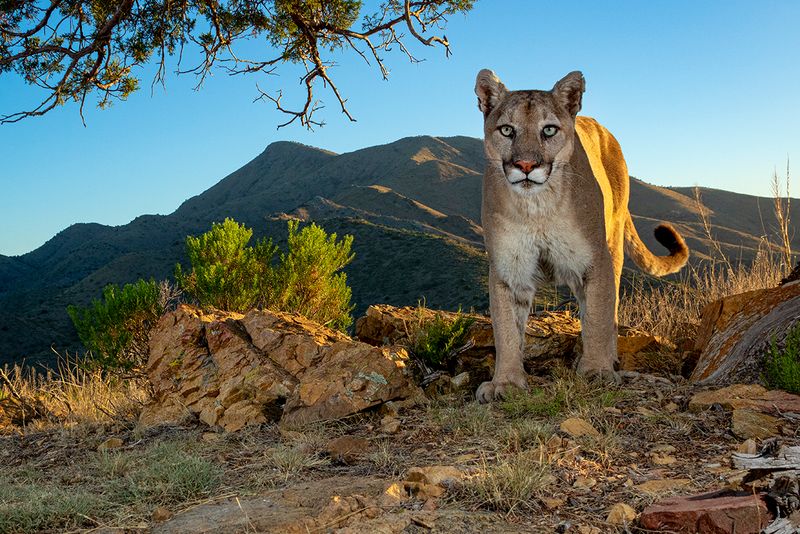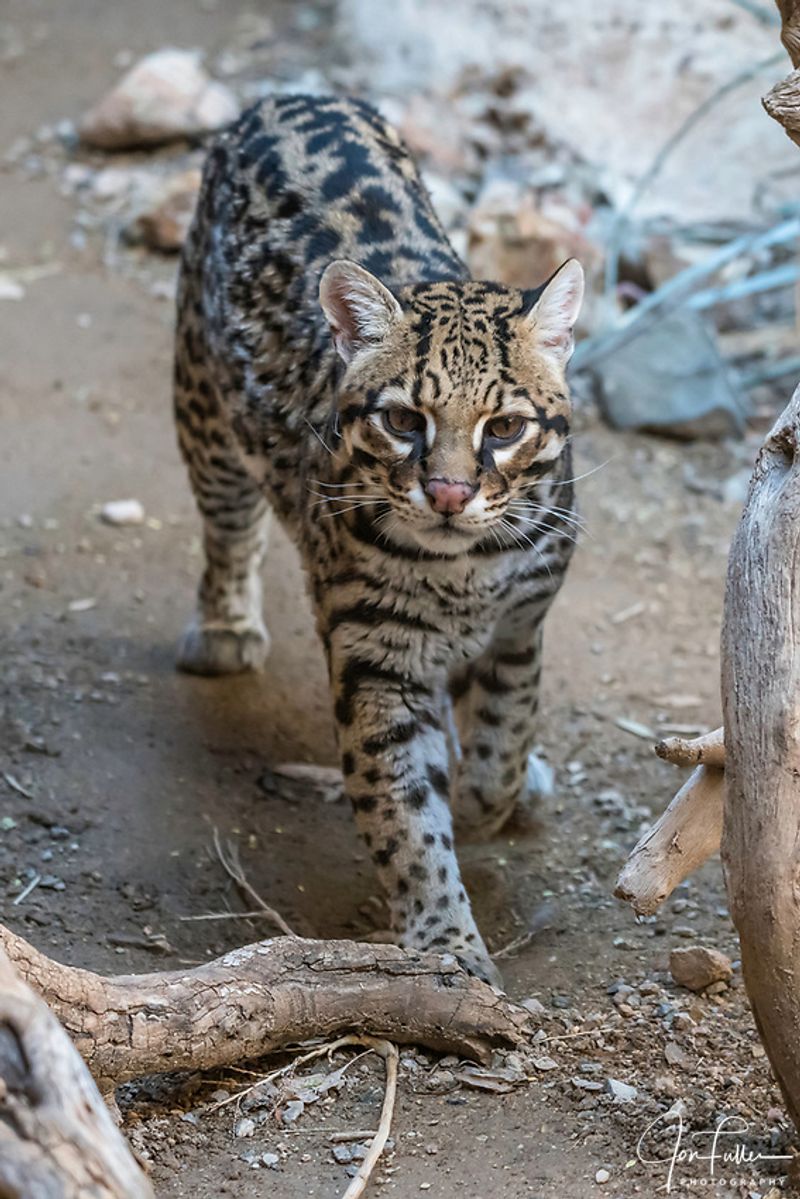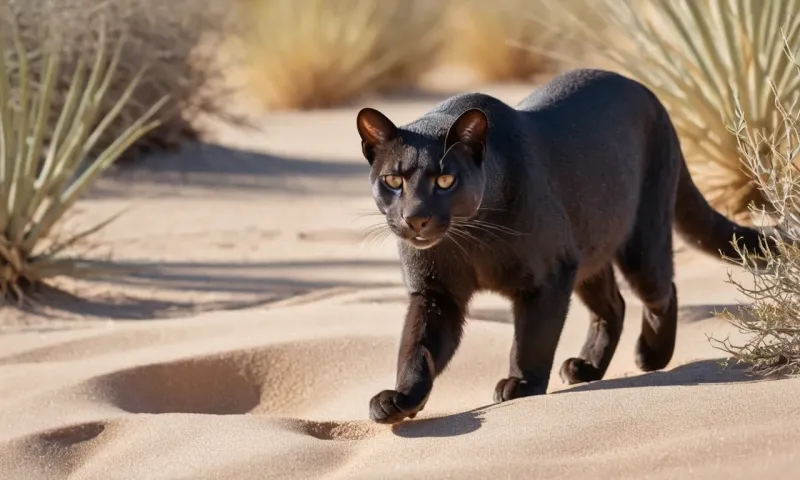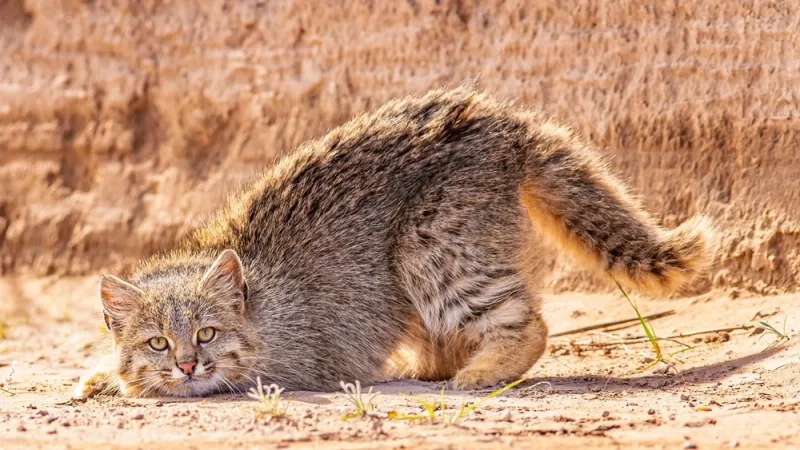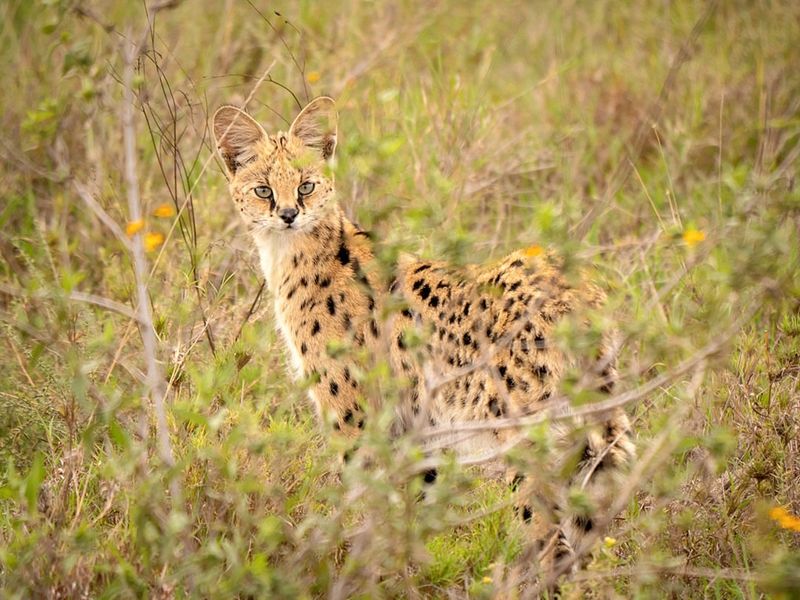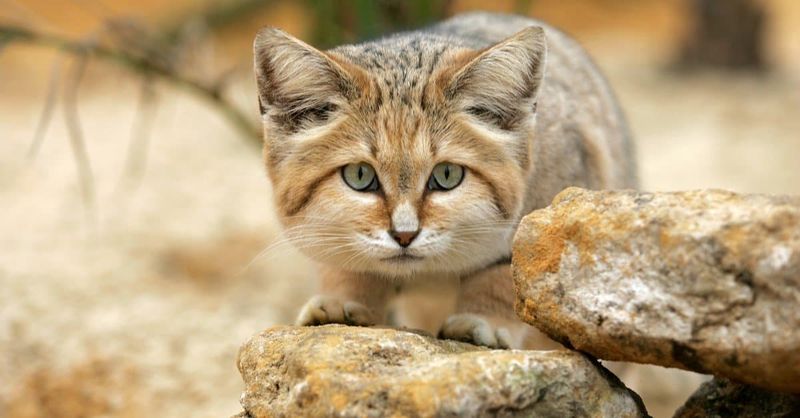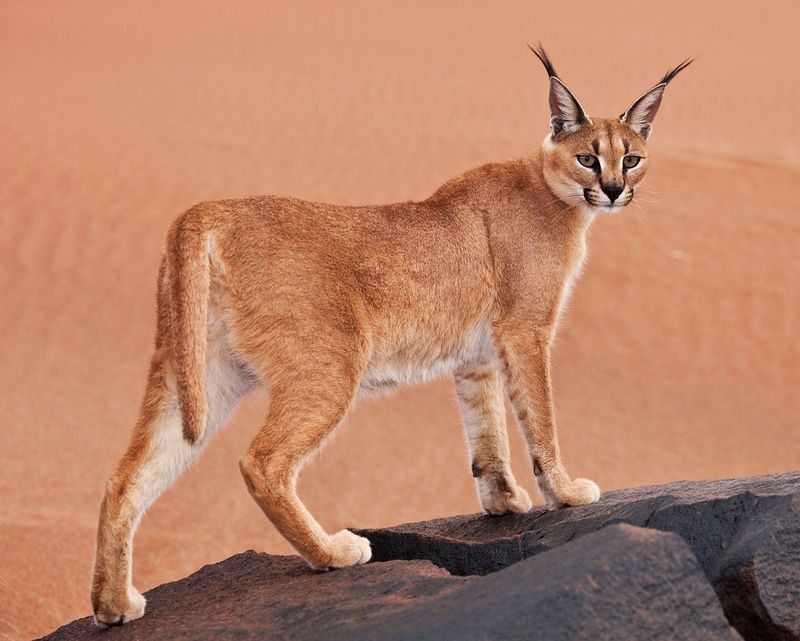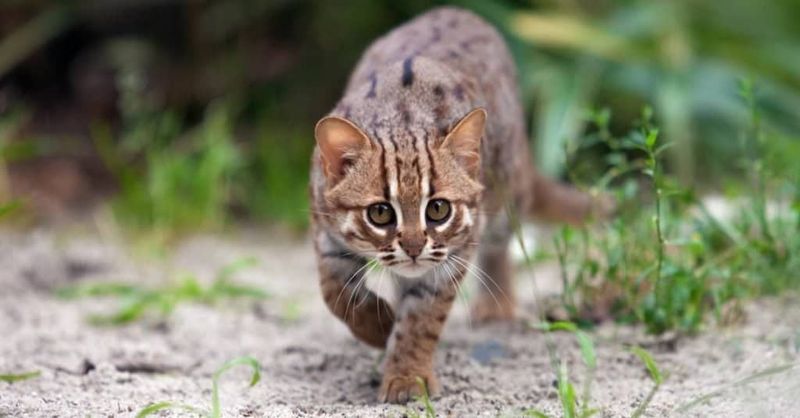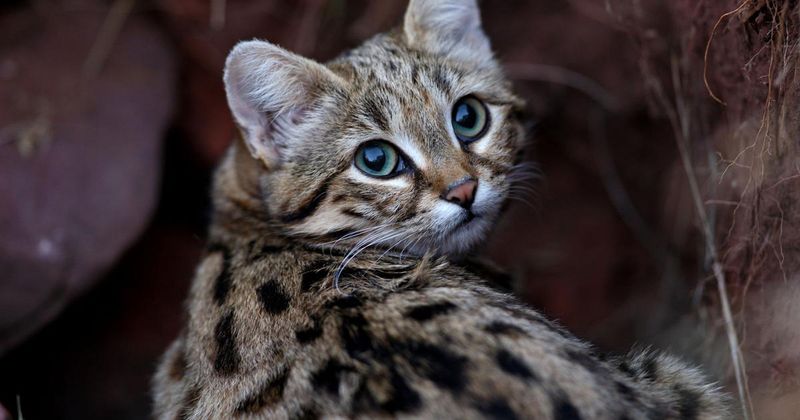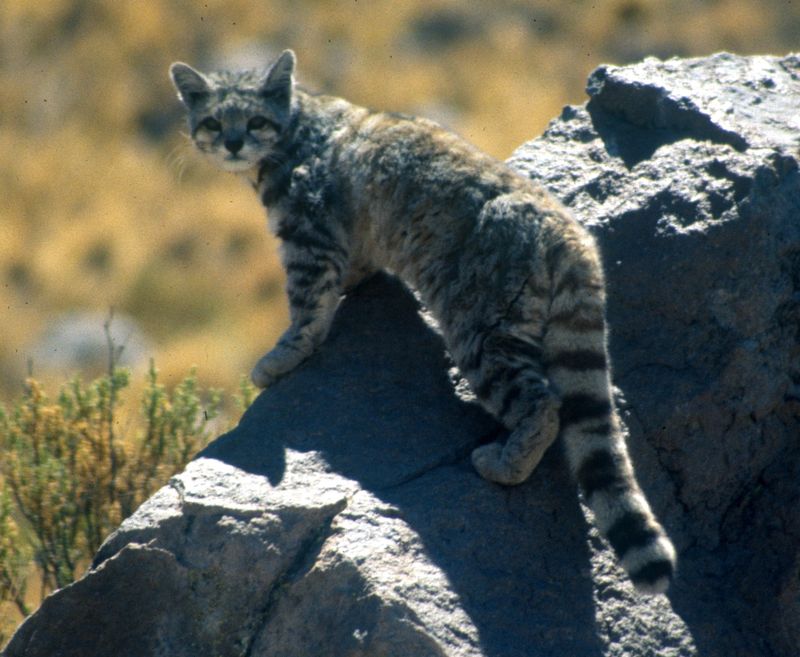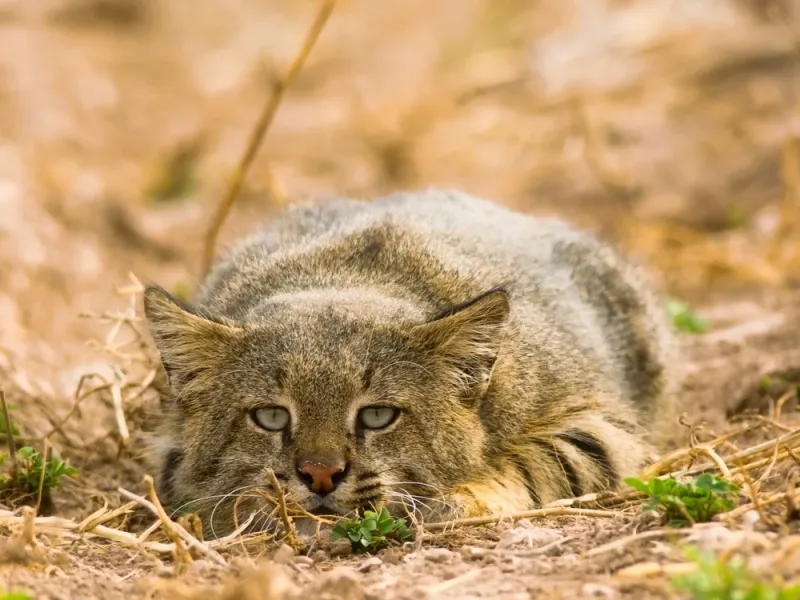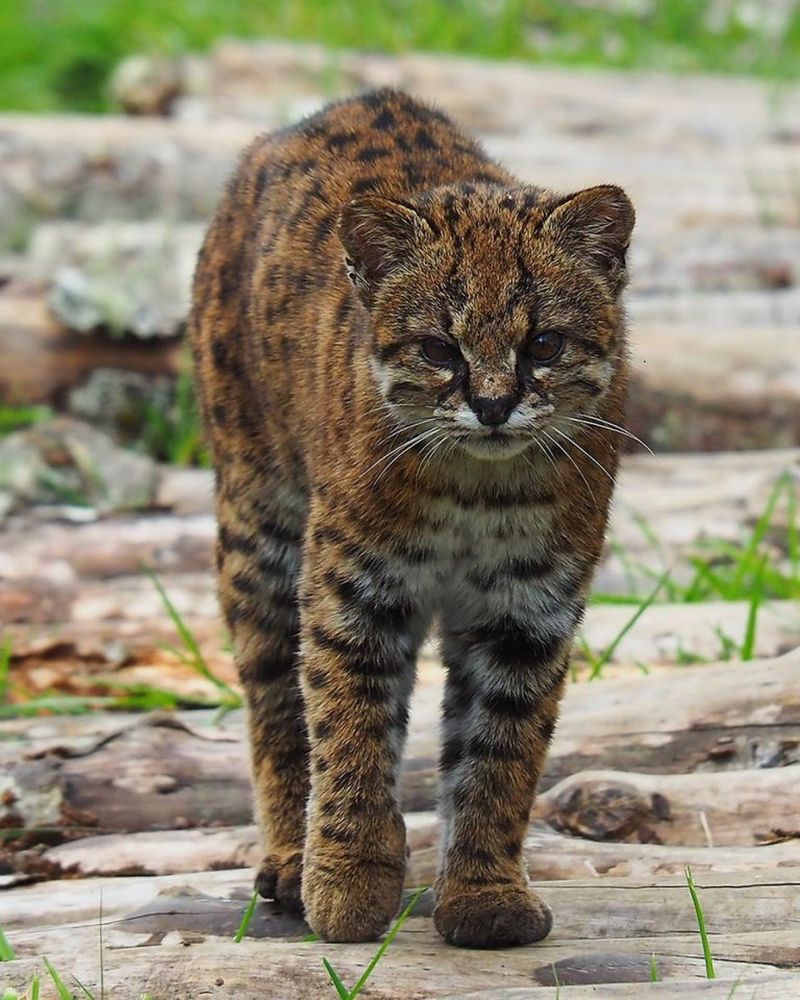📖 Table of Content:
- 1. Mountain Lion (Puma concolor)
- 2. Bobcat (Lynx rufus)
- 3. Jaguar (Panthera onca)
- 4. Ocelot (Leopardus pardalis)
- 5. Jaguarundi (Herpailurus yagouaroundi)
- 6. Canadian Lynx (Lynx canadensis)
- 7. Margay (Leopardus wiedii)
- 8. Pampas Cat (Leopardus colocola)
- 9. Serval (Leptailurus serval)
- 10. Sand Cat (Felis margarita)
- 11. Caracal (Caracal caracal)
- 12. Flat-headed Cat (Prionailurus planiceps)
- 13. Rusty-spotted Cat (Prionailurus rubiginosus)
- 14. Black-footed Cat (Felis nigripes)
- 15. Geoffroy’s Cat (Leopardus geoffroyi)
- 16. Andean Mountain Cat (Leopardus jacobita)
- 17. Colocolo (Leopardus colocolo)
- 18. Kodkod (Leopardus guigna)
- 19. Iberian Lynx (Lynx pardinus)
Arizona’s deserts are a unique and diverse habitat, home to an array of wild cat species. These stealthy and majestic creatures are perfectly adapted to the harsh conditions, each playing their own role in the ecosystem. This blog dives into the fascinating world of these 19 wild cats, revealing their unique traits and the vital roles they play in balance of the desert’s ecological fabric.
1. Mountain Lion (Puma concolor)
Known for their solitary nature, are the largest cats in Arizona. With a sleek, muscular build, they roam the desert landscapes, excelling at stealthy hunts. Primarily feeding on deer, they also hunt smaller animals, ensuring ecological balance. With their adaptable nature, these felines are found across diverse terrains. Despite their elusive behavior, mountain lions play a crucial role in controlling prey populations, maintaining the desert’s balance.
2. Bobcat (Lynx rufus)
Bobcats, with their tufted ears and short tails, are common sights in Arizona’s deserts. They are adaptable hunters, preying on small mammals, birds, and reptiles. These agile cats thrive in diverse habitats, showcasing their resilience. Despite their smaller size, they are fierce and skilled hunters. Bobcats’ ability to adapt to various environments makes them a testament to nature’s ingenuity.
3. Jaguar (Panthera onca)
Jaguars once roamed widely across Arizona but are now rare and elusive. Known for their powerful build and rosette-patterned coats, they are top predators. Jaguars prefer dense vegetation, where they excel in ambush hunting. Their presence, though scarce, signifies a healthy ecosystem. Efforts to conserve these magnificent creatures are vital for ecological balance.
4. Ocelot (Leopardus pardalis)
With their striking spotted coats, inhabit Arizona’s southeastern regions. Preferring dense vegetation and riparian areas, they remain elusive. These small cats feed on a variety of prey, including mammals, birds, and reptiles. Their adaptability to different habitats highlights their ecological importance. Conserving their habitats ensures the survival of these beautiful creatures.
5. Jaguarundi (Herpailurus yagouaroundi)
Jaguarundis are unique with their weasel-like appearance, sporting long bodies and short legs. Though unconfirmed in Arizona, sightings hint at their presence. These cats prefer dense vegetation near water. Their daytime activity and elusive nature add to their mystery. Protecting potential habitats is crucial for their conservation.
6. Canadian Lynx (Lynx canadensis)
Distinct with its thick fur and tufted ears, is a rare visitor to Arizona’s higher elevations. Preferring cooler climates, they are adept hunters, primarily preying on snowshoe hares. Their presence in Arizona is rare and usually linked to colder, northern areas. These beautiful cats symbolize the wild and untamed spirit of the region’s higher altitudes.
7. Margay (Leopardus wiedii)
Known for its climbing prowess, is a rare sight in Arizona. With large eyes and a spotted coat, it is perfectly adapted to nocturnal life. Margays hunt a variety of prey, favoring small mammals and birds. Their arboreal lifestyle distinguishes them from other cats. Conservation of their forested habitats is essential for their survival.
8. Pampas Cat (Leopardus colocola)
Infrequent visitors to Arizona, with sandy coats that blend into the arid landscape. Adapted to grasslands, they hunt small mammals and birds. Their elusive nature makes them a rare find, adding to their mystique. Understanding their role in the ecosystem is crucial for conservation efforts.
9. Serval (Leptailurus serval)
Servals, with their long legs and large ears, are an unusual sight in Arizona. These cats are skilled hunters, adept at catching small prey with precision. Servals inhabit grasslands and savannas, their striking appearance making them unmistakable. Their presence in Arizona, though rare, adds to the region’s biodiversity.
10. Sand Cat (Felis margarita)
With their pale, sandy fur, are elusive residents of Arizona’s deserts. These small cats are exceptional hunters, adapted to arid environments with minimal water. They primarily hunt at night, preying on small mammals and insects. Their ability to survive harsh desert conditions showcases their resilience and adaptability.
11. Caracal (Caracal caracal)
Caracals are known for their striking appearance with long tufted ears. These agile predators excel at leaping to catch birds mid-air. Although not native, occasional sightings in Arizona add intrigue. Caracals’ adaptability to various habitats showcases their versatility. Their presence, though rare, enhances the desert’s rich wildlife tapestry.
12. Flat-headed Cat (Prionailurus planiceps)
Characterized by their distinct flat foreheads, are rare in Arizona. They prefer habitats near water bodies, feeding on fish and small aquatic creatures. Their unique appearance and diet set them apart from other feline species. Protecting their watery habitats is essential for their continued presence.
13. Rusty-spotted Cat (Prionailurus rubiginosus)
The rusty-spotted cat, one of the smallest wild cats, is a rare gem in Arizona. With a rusty-spotted coat, it blends perfectly into rocky terrains. Known for its agility and speed, it hunts rodents and birds with precision. Despite its size, it plays a significant role in maintaining the ecological balance.
14. Black-footed Cat (Felis nigripes)
Black-footed cats, although tiny, are formidable hunters in Arizona’s deserts. With their distinctive black feet, they are well-camouflaged in sparse vegetation. These nocturnal hunters are efficient predators, specializing in small mammals and insects. Their adaptability to harsh environments underscores their survival skills.
15. Geoffroy’s Cat (Leopardus geoffroyi)
Geoffroy’s cats are adaptable and resilient, with a striking spotted coat that aids camouflage. Found in Arizona’s grasslands and deserts, they hunt small mammals and birds. Their ability to adapt to diverse environments highlights their ecological significance. Conservation efforts are crucial to ensure their continued presence.
16. Andean Mountain Cat (Leopardus jacobita)
An elusive and rare resident of Arizona’s higher altitudes. With a thick fur and bushy tail, it is adapted to cold environments. These cats primarily hunt small mammals, playing a unique role in the ecosystem. Their scarcity underscores the need for habitat protection and conservation.
17. Colocolo (Leopardus colocolo)
Colocolos, with their tawny coats, are rare and elusive in Arizona. These medium-sized cats adeptly hunt small mammals, birds, and reptiles. Preferring rocky and arid habitats, they are symbols of wilderness and resilience. Efforts to understand their ecological role are crucial for conservation.
18. Kodkod (Leopardus guigna)
The smallest wild cats in the Americas, are rare in Arizona. With spotted coats and large eyes, they are adept at navigating dense underbrush. Their diet consists primarily of small mammals and birds. Despite their size, kodkods play a vital ecological role, and their conservation is important for biodiversity.
19. Iberian Lynx (Lynx pardinus)
The Iberian lynx, with tufted ears and a prominent ruff, is an unexpected visitor to Arizona. Known for its specialized diet of rabbits, it controls prey populations. Its presence in Arizona, though rare, highlights the desert’s diverse wildlife. Conservation efforts ensure this magnificent cat continues to thrive in its native and new habitats.

